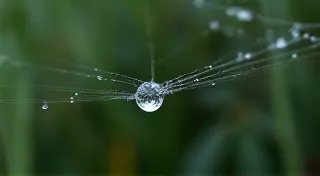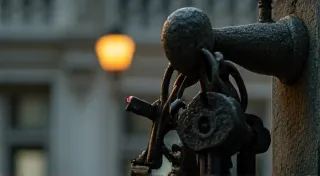The Ghostly Echoes of Horn: A Requiem for Forgotten Button Factories
The gentle clink of buttons. It's a sound most modern ears might dismiss as insignificant, a mere accompaniment to clothing. But to a collector, a historian, a lover of forgotten trades, that clink resonates with the echoes of an era. Particularly poignant is the sound of a horn button – a sound that carries the weight of industry, innovation, and ultimately, decline. My own fascination began with a single, unassuming horn button found tucked within a box of my grandmother’s belongings. It wasn't particularly ornate, but its warmth, the slight texture, the way the light caught its surface – it spoke of something lost.
Today, we rarely consider where our buttons come from. Mass production has rendered them almost disposable. Yet, in the Victorian era, buttons were more than fasteners; they were miniature works of art, statements of status, and the product of burgeoning industrialization centered around often-overlooked factories. Horn buttons, in particular, held a unique and fascinating place in this story.
The Rise of Horn: From Waste to Resource
Before the advent of plastics, horn – specifically, the horn of cattle – was a readily available byproduct of the meat industry. What was once considered waste became a valuable raw material. Early horn button production began as a cottage industry, with small workshops employing families to painstakingly hand-carve buttons from horn sheets. Imagine the rhythmic tap of tools, the scent of horn dust hanging in the air, the quiet pride in creating something beautiful from what others discarded. These early artisans possessed an intimate understanding of their material, able to discern flaws and utilize the horn's natural beauty in their designs.
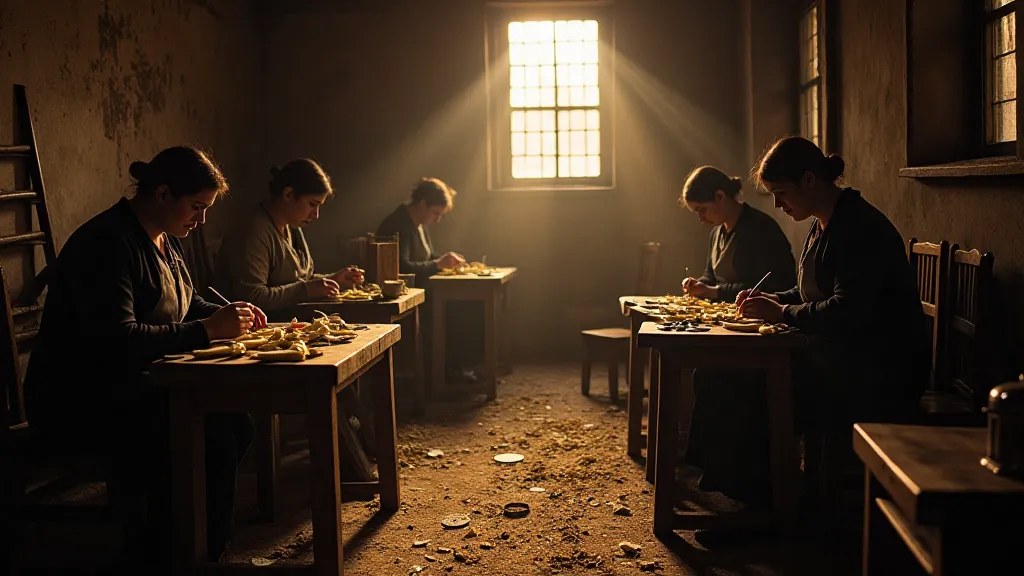
The Industrial Shift: Factories and Efficiency
The mid-19th century brought the inevitable shift towards industrialization. The demand for buttons, fuelled by rising middle-class fashion and military needs, outstripped the capacity of small workshops. Early button factories began to appear, initially powered by water or steam. Machines were invented to shear the horn into sheets, cut out the button shapes, and even apply finishes. The process, while increasing output, also altered the nature of the work. The individual craftsperson’s touch was gradually replaced by the standardized efficiency of the machine. While the quality of some machine-made buttons was excellent, the inherent character and subtle variations of the hand-carved buttons were often lost. Factories like Milners’ and Osbornes in London, and numerous smaller establishments across Europe, became significant employers, drawing workers from rural areas seeking a better life – or at least, a more reliable income.
The Environmental Toll: A Forgotten Cost
The rapid expansion of horn button factories wasn’t without its environmental consequences. The vast quantities of horn required placed a strain on livestock populations. Horn dust, a significant byproduct of the manufacturing process, posed a health hazard to workers and polluted the surrounding environment. While records are scarce, contemporary accounts suggest chronic respiratory problems were common among factory workers. We tend to romanticize the Victorian era, focusing on the elegance and innovation, but it’s important to acknowledge the often-hidden costs of that progress. The relentless pursuit of efficiency frequently overlooked the well-being of workers and the sustainability of resources.
Distinctive Styles: Identifying Horn Button Variations
Identifying horn buttons can be a rewarding pursuit for collectors. Early horn buttons often exhibit subtle irregularities – slight variations in thickness, minor imperfections in the carving – hallmarks of hand-craftsmanship. As factories became more sophisticated, so too did their ability to mimic hand-carved qualities. Look for the cut marks from the initial horn sheets, the way the horn grain flows, and the presence (or absence) of a shank. Horn buttons were frequently dyed – black, brown, green, and even vibrant colors were achieved through various chemical processes. Black horn buttons, often mistaken for jet (a mineral substitute), were particularly popular for mourning attire.
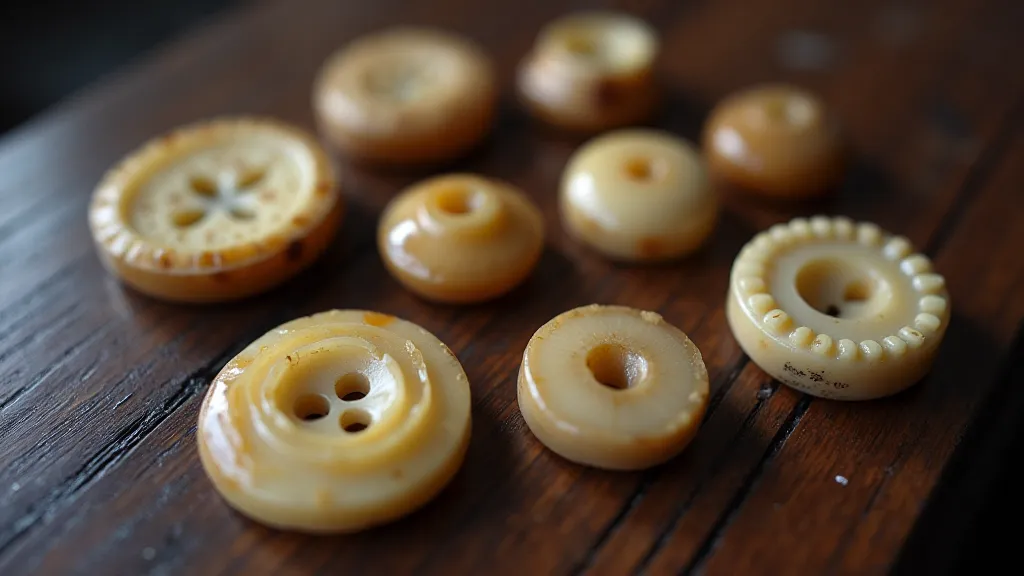
Military Buttons: A Sign of Duty and Hierarchy
Military buttons offer a unique window into the historical context of horn button production. Uniforms demanded large quantities of buttons, often bearing regimental crests or specific markings. Horn was an ideal material – durable, relatively inexpensive, and easily embossed. Examining military buttons allows us to trace the evolution of army uniforms and the changing ranks within the armed forces. The quality and design of these buttons often reflected the status and prestige of the regiment.
The Decline and Legacy: Echoes of a Lost Trade
The late 19th and early 20th centuries brought new challenges to the horn button industry. The advent of cheaper, mass-produced plastic buttons dramatically undercut the demand for horn. The First World War brought further disruption, impacting both material supply and consumer spending. By the mid-20th century, most horn button factories had closed their doors, their machinery silenced, their skilled workers dispersed. Today, the few remaining workshops are primarily focused on specialized orders or restoration work.
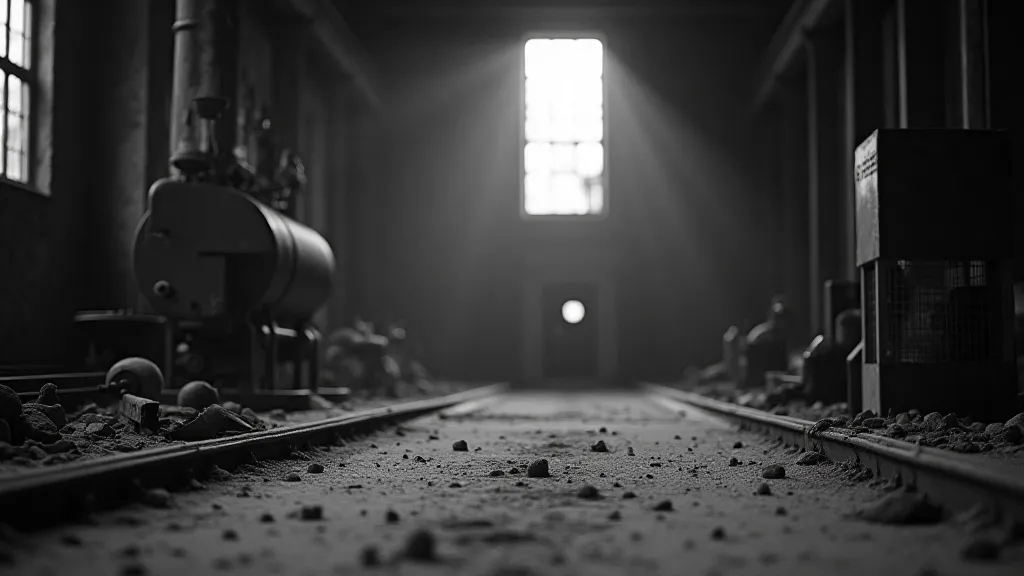
Preserving the Past: A Collector's Responsibility
Collecting Victorian-era horn buttons isn't merely about acquiring beautiful objects; it’s about preserving a piece of history. It’s about honoring the ingenuity of the artisans and factory workers who shaped these miniature masterpieces. By researching the factories, understanding the manufacturing techniques, and appreciating the historical context, we can ensure that the ghostly echoes of horn continue to resonate for generations to come. Restoration, when approached with sensitivity and respect for the original material, can help to prolong the life of these fragile artifacts, allowing us to connect with the past in a tangible and meaningful way. The clink may be quieter now, but the story behind those buttons deserves to be told.

